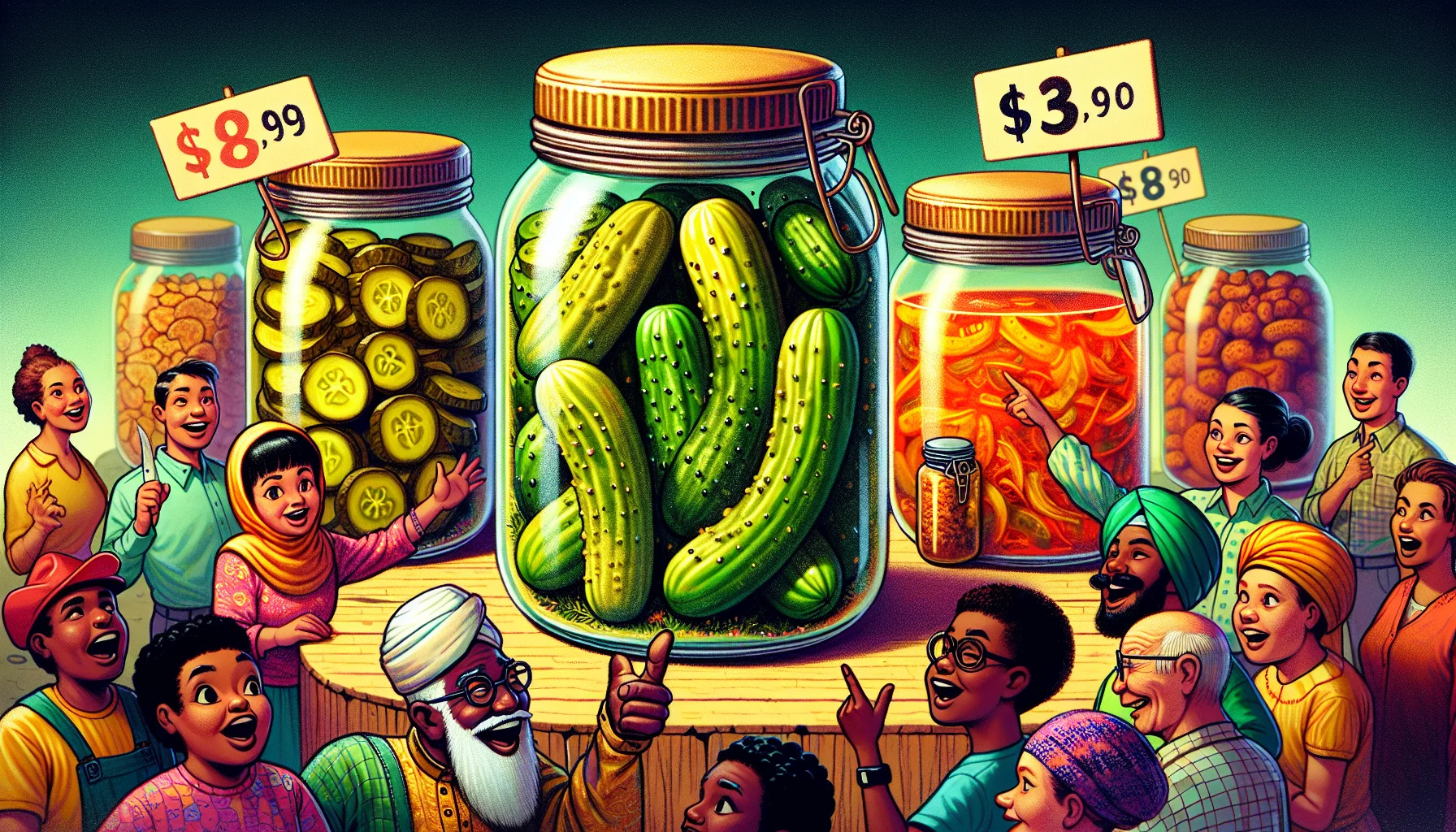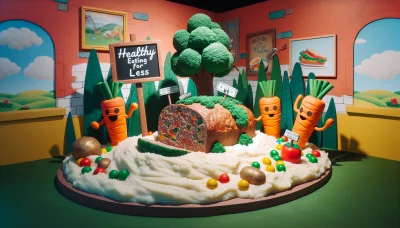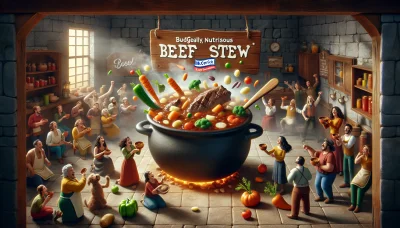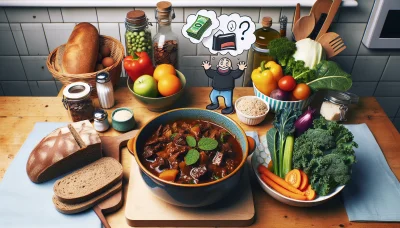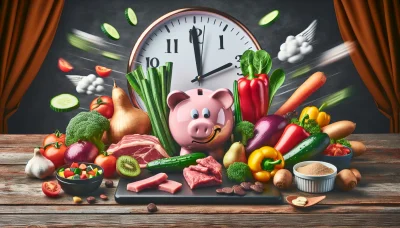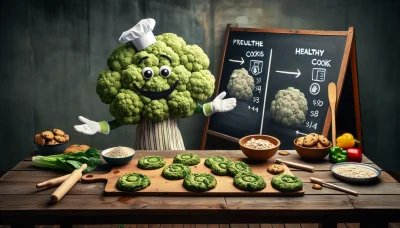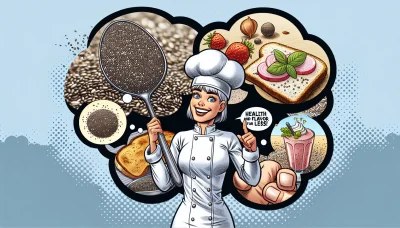Three Varieties of Homemade Pickles Quiz
Test Your Knowledge
Question of
Three Varieties of Homemade Pickles for a Healthier Diet
Homemade pickles are not only a delightful addition to any meal but also pack a punch of health benefits that can significantly contribute to a healthier diet. Rich in probiotics, essential vitamins, and minerals, these fermented delights are known for improving digestion, boosting the immune system, and even aiding in weight loss. By incorporating homemade pickles into your eating routine, you're choosing a path of wellness that is both nutritious and flavorful. Let's explore three delicious varieties that can easily be made at home and how they can enhance your health and overall well-being.
1. Classic Dill Pickles
Dill and cucumbers, the primary ingredients in classic dill pickles, offer a variety of nutritional benefits. Dill is known for its antioxidants, which can help to fight off disease-causing free radicals in the body. It also provides a good source of vitamin C, magnesium, and vitamin A, contributing to improved immunity, bone health, and vision. Cucumbers, being high in water content, are excellent for hydration. They contain important vitamins such as vitamin K, which is essential for blood clotting and bone health, and they have a low calorie count, making them a healthy addition to any diet.
Ingredients needed to make classic dill pickles:
- Fresh cucumbers
- Water
- White vinegar
- Salt
- Sugar (optional)
- Fresh dill
- Garlic cloves
- Whole peppercorns
- Mustard seeds (optional)
2. Spicy Kimchi
Kimchi, a staple in Korean cuisine, is not only known for its bold flavors but also for its significant health benefits, particularly for gut health. Rich in probiotics due to the fermentation process, kimchi can help improve digestion, boost the immune system, and even aid in weight loss. Consuming kimchi regularly introduces beneficial bacteria to the digestive tract, promoting a healthy gut microbiome. This, in turn, can enhance overall health and well-being.
- Napa cabbage
- Sea salt
- Water
- Korean red pepper flakes (gochugaru)
- Garlic
- Ginger
- Scallions
- Daikon radish (optional)
- Fish sauce or soy sauce (for a vegetarian option)
- Sugar
3. Sweet and Tangy Bread and Butter Pickles
The balance of flavors in Sweet and Tangy Bread and Butter Pickles is truly remarkable. These pickles offer a perfect harmony between sweetness and tanginess, making them a delightful addition to any meal. Not only do they tantalize your taste buds, but they also come with health benefits. Packed with essential vitamins and minerals, these pickles can aid in digestion and provide a good source of dietary fiber.
- Cucumbers
- White vinegar
- Apple cider vinegar
- White sugar
- Brown sugar
- Kosher salt
- Mustard seeds
- Celery seeds
- Ground turmeric
- Onion, thinly sliced
- Fresh dill or dill seeds (optional)
Step-by-Step Guide to Making Homemade Pickles
Pickling is a traditional method of preserving vegetables, and making homemade pickles can be a rewarding DIY kitchen project. The general process involves soaking vegetables in a solution of vinegar or brine, which not only preserves them but also imparts a delicious tangy flavor. This guide will introduce you to the basic steps involved in making three popular varieties of pickles: dill pickles, sweet pickles, and spicy pickles.
- Start by selecting fresh, crisp vegetables. Cucumbers are the most common choice, but you can also pickle vegetables like carrots, radishes, and cauliflower.
- Clean and cut your vegetables as desired. Smaller vegetables can be left whole, while larger ones can be sliced or cut into spears.
- Prepare your pickling brine. This typically involves boiling water with vinegar, salt, and sugar (the sugar can be adjusted or omitted for dill and spicy pickles).
- Add spices and herbs to your jars. Dill pickles will need fresh dill and garlic, sweet pickles benefit from pickling spice and extra sugar, and spicy pickles require chili peppers or flakes for heat.
- Pack your vegetables tightly into sterilized jars, leaving some space at the top.
- Pour the hot brine over the vegetables in the jars, ensuring they are completely covered while still leaving headspace at the top.
- Seal the jars and let them cool to room temperature before moving them to the refrigerator. For best flavor, let the pickles sit for at least a week before consuming.
Health Benefits of Homemade Pickles
Homemade pickles offer a range of health benefits that contribute to a balanced diet and overall well-being. Unlike store-bought varieties, homemade pickles can be made with significantly reduced sodium content, which is beneficial for maintaining healthy blood pressure levels. Additionally, making pickles at home allows for the exclusion of preservatives and artificial additives, ensuring a more natural and wholesome product. Consuming homemade pickles can also introduce beneficial bacteria to the gut, promoting a healthy digestive system.
Here is a summary of the health benefits of homemade pickles:
- Reduced sodium content, beneficial for blood pressure management
- Absence of preservatives and artificial additives
- Introduction of beneficial bacteria to the gut
- Promotion of a healthy digestive system
Storing Your Homemade Pickles
To ensure your homemade pickles remain fresh and tasty for as long as possible, it's crucial to follow best practices for storage. First, always use clean, airtight containers. Glass jars with tight-sealing lids are ideal. Ensure your pickles are fully submerged in the brine, as this helps prevent spoilage. For pantry storage, ensure the jars are properly sealed using a water bath canning method. Once opened, or if you're storing quick pickles, refrigeration is necessary. Keep your pickles in the back of the fridge where the temperature is most consistent. By following these steps, you can enjoy your delicious homemade pickles for months.
| Storage Method | Shelf Life |
|---|---|
| Refrigerated | 1-2 months |
| Pantry (unopened) | Up to 1 year |
